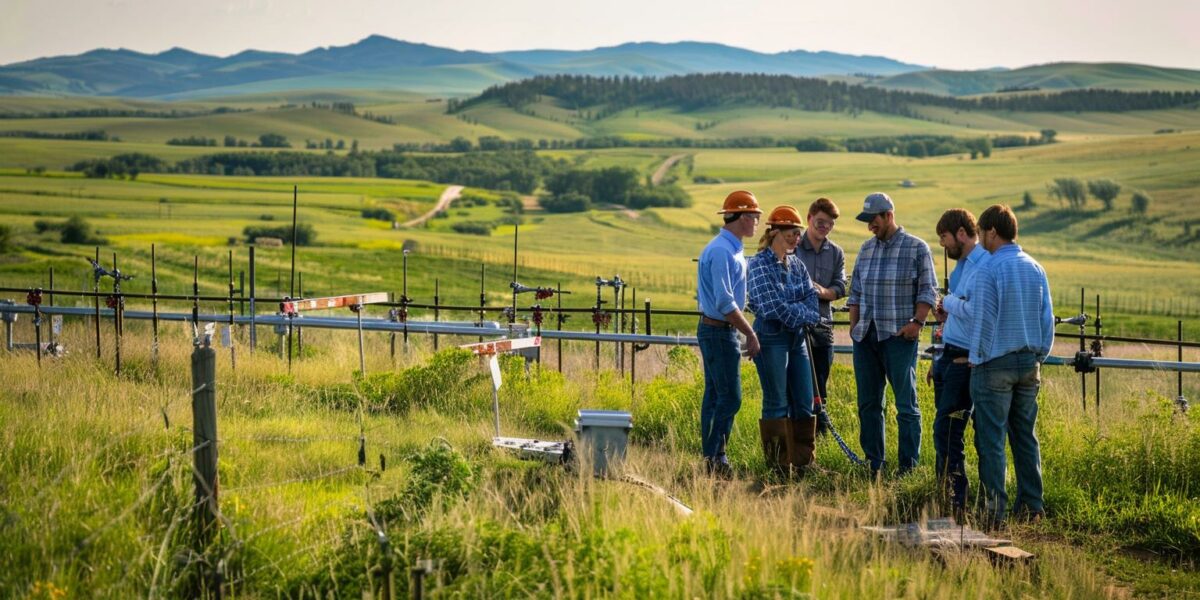The Overlooked Climate Threat: Methane
While carbon dioxide often takes the spotlight in climate discussions, methane is an equally significant greenhouse gas. It is a byproduct of animal agriculture and fossil fuel extraction, and is 80 to 90 times more potent than carbon dioxide over a 20-year period. This potency makes methane a critical target for emission reduction efforts.
Stanford climate scientist Rob Jackson emphasizes the opportunity to address methane emissions. He asserts that reducing methane can have an immediate impact on slowing climate change. Unlike carbon dioxide, which lingers in the atmosphere for centuries, methane breaks down much faster.
Jackson’s optimism is rooted in the potential for rapid progress. Technologies and policies aimed at reducing methane emissions are already available and can be implemented swiftly. This offers a tangible path for significant climate action within our lifetimes.
Jackson’s new book, “Into the Clear Blue Sky”, delves into these solutions and the science behind methane’s impact. It serves as both a call to action and a guide for policymakers and the public.
Methane’s Sources and Solutions
Methane primarily comes from three sources:
- Animal Agriculture: Livestock such as cows produce methane during digestion.
- Fossil Fuel Extraction: Natural gas and oil production release methane through leaks and venting.
- Waste Management: Landfills and waste treatment plants emit methane as organic matter decomposes.
Reducing emissions from these sources involves a combination of technological innovations and regulatory measures. For instance, capturing methane from landfills and using it as an energy source can significantly cut emissions. Similarly, improving livestock feed and manure management can reduce methane production from agriculture.
Fossil fuel industries also have a critical role to play. By implementing better monitoring and repair of leaks, significant reductions in methane emissions can be achieved. These measures not only benefit the environment but also improve the efficiency and safety of energy production.
Jackson highlights that these solutions are not just theoretical. Many are already being implemented with success. The challenge lies in scaling up these efforts and ensuring widespread adoption.
The Role of Policy and Innovation
Effective policy frameworks are essential for driving methane reduction efforts. Governments can implement regulations that mandate methane monitoring and reduction in key sectors. Incentives for adopting methane-reducing technologies can also accelerate progress.
Innovation plays a crucial role in developing new methods for mitigating methane emissions. Research and development in areas such as biogas production and advanced agricultural practices are vital. These innovations can provide cost-effective solutions that benefit both the environment and the economy.
Public awareness and education are also critical. By understanding the impact of methane and the available solutions, individuals and communities can support and advocate for effective policies. Grassroots movements and advocacy groups have the power to influence local and national decision-making.
Overall, a multifaceted approach that combines policy, innovation, and public engagement is required to tackle methane emissions effectively. Jackson’s research and advocacy provide a roadmap for achieving significant climate benefits in the near term.
Hope for the Future
Despite the challenges, there is a sense of hope and optimism in Jackson’s message. He believes that concerted efforts to reduce methane emissions can yield rapid and substantial climate benefits. This optimism is backed by scientific evidence and practical examples of successful methane reduction initiatives.
Jackson calls for a collective effort from governments, industries, and individuals. By prioritizing methane reduction, we can make a meaningful impact on climate change. This requires a shift in focus and investment towards the technologies and policies that can deliver these benefits.
His book, “Into the Clear Blue Sky”, outlines a clear path forward. It provides actionable insights and strategies for reducing methane emissions. The book serves as a guide for policymakers, businesses, and the public, highlighting the urgency and feasibility of taking action now.
In conclusion, addressing methane emissions offers a significant opportunity to combat climate change. By focusing on this potent greenhouse gas, we can achieve immediate and impactful results. Jackson’s work underscores the importance of this effort and provides a hopeful vision for the future.



stellatwilight
Interesting! What can individuals do to reduce their own methane footprint?
masonillusionist
How do we ensure that fossil fuel companies actually monitor and repair leaks efficiently?
chloe
Great article! But I wonder, how much will these methane reduction initiatives cost?
Evelyn
Rob Jackson’s book sounds like a must-read! Where can I buy “Into the Clear Blue Sky”?
AvaWhisperer
Why haven’t we focused on methane more before? This seems like a no-brainer.
john
Thank you for shedding light on this. It’s crucial that we act fast on such impactful solutions!
max6
How feasible is it to implement these methane reduction technologies on a global scale?
clara
So, does this mean we should stop eating beef entirely? Seems like a drastic move. 😅
BentleyIllusionist
Interesting read! What specific policies are currently being considered to regulate methane emissions from agriculture?
RyanSapphire
Wow, I had no idea methane was that much more potent than CO2! Thanks for sharing this insightful post. 😊